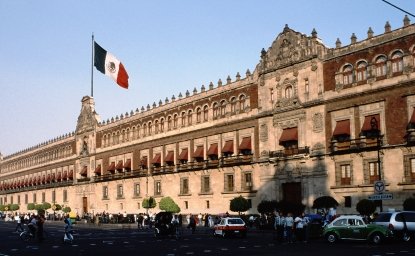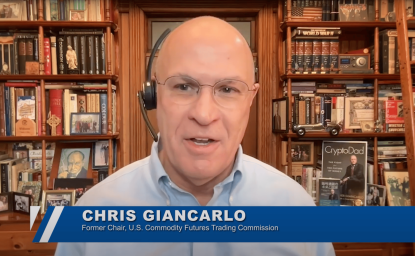In the past five decades, the country has undergone a great collapse and two incomplete responses. The political and economic system that was constructed at the end of the revolutionary feat had given its all, even to the point of ending up in collapse. Those who lash out today at the diverse changes faced in these decades assume that the reforms in political as well as in economic matters were voluntary when in reality, they were the product of the lack of an alternative. In the seventies, the country commenced living through the beginning of the end of the old system. On the economic side, the balance of payments braved the havoc that emerged as the consequence of the accelerated diminution of grain exports, the latter key for financing machinery and equipment imports. In the absence of that source of financing, the whole strategy of import substitution stopped being sustainable. On the political side, the 1968 Student Movement heralded the instigation of the vehement tensions that had accrued over time, until the monopoly of the PRI hegemony was extinguished.
In this manner, with greater or lesser clarity of direction and common sense, from 1970 the country began to experiment in both terrains, but it was not until the eighties, after populist crazes whittled away at the government, that a process of reforms was initiated in earnest, first in the economy (with the evident intention of rendering any political reform unnecessary) and later, when that premise resulted unsustainable, in the electoral ambit. In both ambits, but above all in the economic, Mexico was exceptional in taking the bull by the horns, at least in terms of vision.
The two great reform processes embarked upon in the last thirty years speak volumes about our way of being and conducting ourselves: enormous ambition for dreaming, but little disposition for grounding these dreams; grandiose objectives but modest goals; comprehending the urgency for change but without altering the essential; grandiloquent discourse but tolerance for interests closest by; understanding that the status quo is untenable but lack of conviction, or capacity, for actually delivering on the reforms that the country embarked upon.
That is how Mexico has ended up with incomplete reforms, many of these extraordinarily relevant and transcendent, but notwithstanding this left unfinished in the end. The transformative vision, in the 1980s and 1990s as well as in these past three years, culminated in being outrun by the dogged reality. Some reforms became bogged down because they encountered powerful interests that squelched them; others were trounced due to the pettiness and/or errors of the implementers, the conflicts of interest to which they gave rise and, in general, due to the perception of excessive costs impacting the beneficiaries of the status quo, in many cases the selfsame reformers and their allies. Reasons for the reformist stagnation are many, but the consequences are few and specific: the economy does not grow and the costs of the paralysis in the form of poverty, growing informality and unemployment, all this adding to the contempt for the governors and their growing lack of legitimacy.
In the political milieu there never has been a visionary and integral project like that which, from the eighties forward, was present in the economy. In the electoral realm, the process was one of partial negotiations that finally sanctioned a platform of fair and equitable competition from the year 1996. While talk of transition was bandied about, it was never understood that a transition requires a precise and consensual definition of the point of departure and that of arrival. For all practical purposes, no one knows when the Mexican political transition began nor is there agreement on when it will end. The prevailing levels of conflict are not the product of chance.
The heart of the matter is that, whatever the cause, we Mexicans have not been able to carry off “the great leap forward.” This contrasts with the findings of Hillel Soifer in his historical study on State building*. According to Soifer, Mexico excels, together with Chile and in contrast with Colombia and Peru, in having built a strong State, the result of the abilities of their elites for organizing themselves, imposing an order and developing a common ideology that would afford coherence to the nation. Soifer’s study also suggests some of the grounds for which some states or regions of the country (for example the South) never consolidated an effective system of government. But the essence, what is of interest about the book, is that from the end of the XIX century there was a great capacity for State building, which was resumed after the Revolution. The question is why we are paralyzed now.
The decision-making paralysis of the government –some call it ochlocracy- is a frequent theme worldwide. Consolidated democracies have been enduring the phenomenon of the existence of interest groups that, to defend their positions, have paralyzed the taking of decisions. Examples abound not only in Mexico but also in the U.S. and in many European countries. It is within this context that the Pact for Mexico was so highly acclaimed throughout the world because, while not very democratic, it appeared to make possible a breakthrough of the state of paralysis. It is now obvious that, to achieve this, we must acquire the knowledge of something more than navigating through Chinatown. And only the society will be able to do this.
*State Building in Latin America, Cambridge, 2015
The views expressed here are solely those of the author.
Author

Mexico Institute Advisory Board Member; Chairman, México Evalúa; Former President, Consejo Mexicano de Asuntos Internacionales (COMEXI); Chairman, Center for Research for Development (CIDAC), Mexico

Mexico Institute
The Mexico Institute seeks to improve understanding, communication, and cooperation between Mexico and the United States by promoting original research, encouraging public discussion, and proposing policy options for enhancing the bilateral relationship. A binational Advisory Board, chaired by Luis Téllez and Earl Anthony Wayne, oversees the work of the Mexico Institute. Read more

Explore More
Browse Insights & Analysis
The Mexico Institute's 2018 Elections Guide



